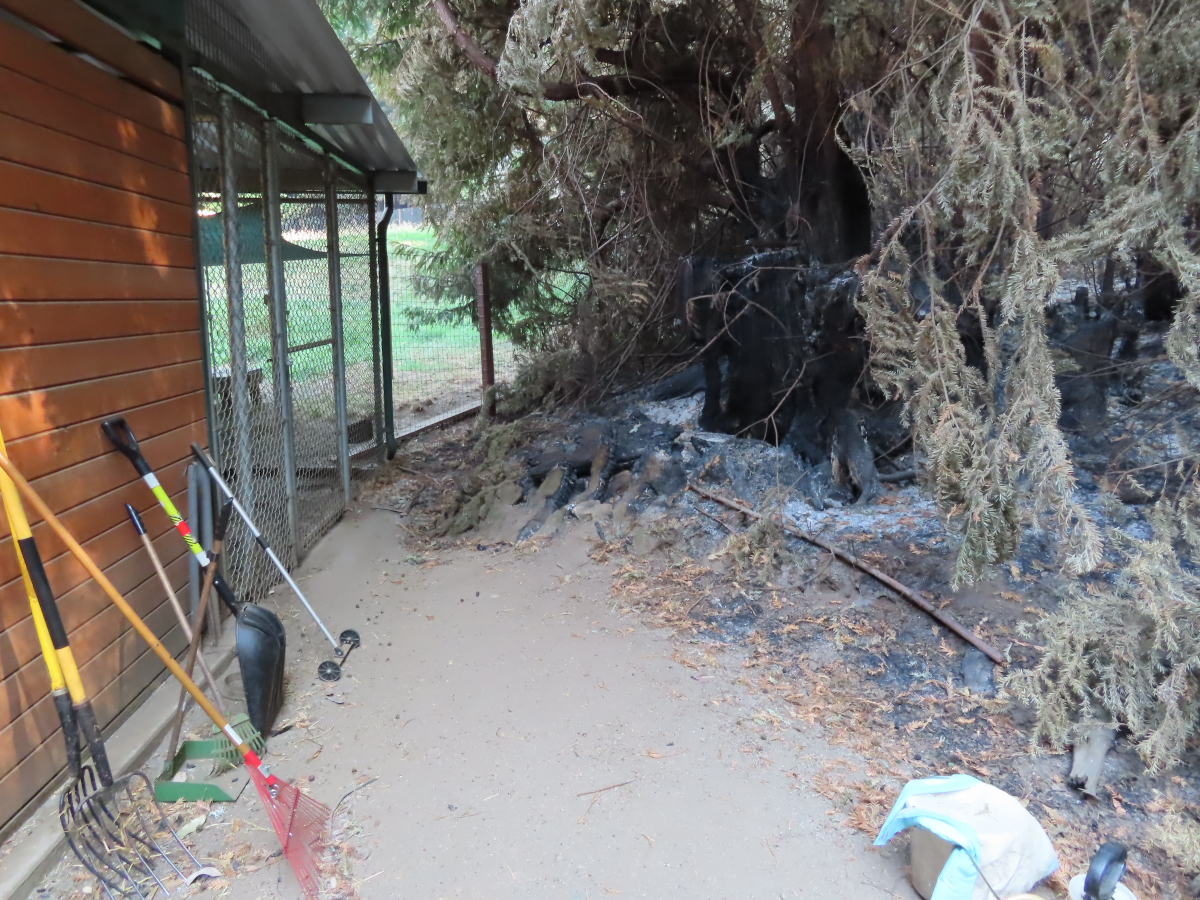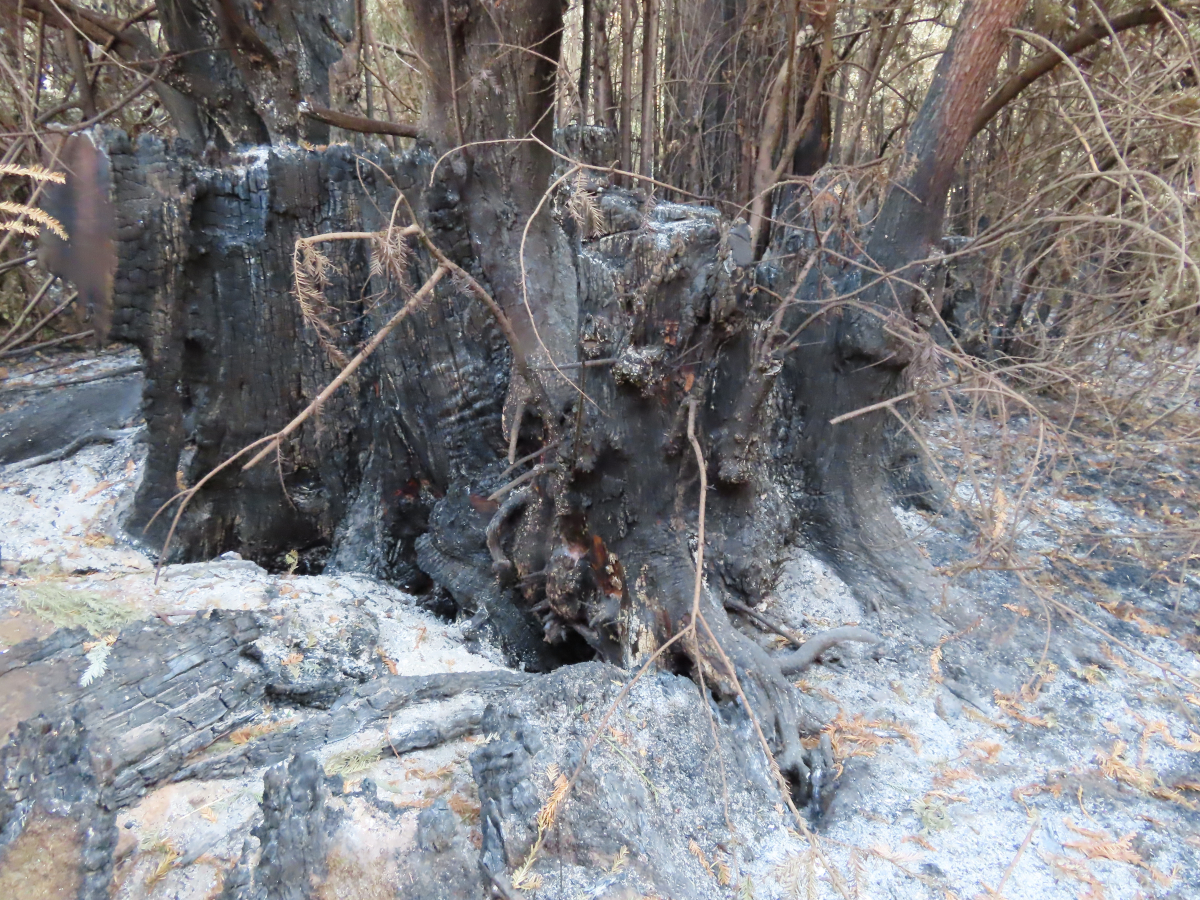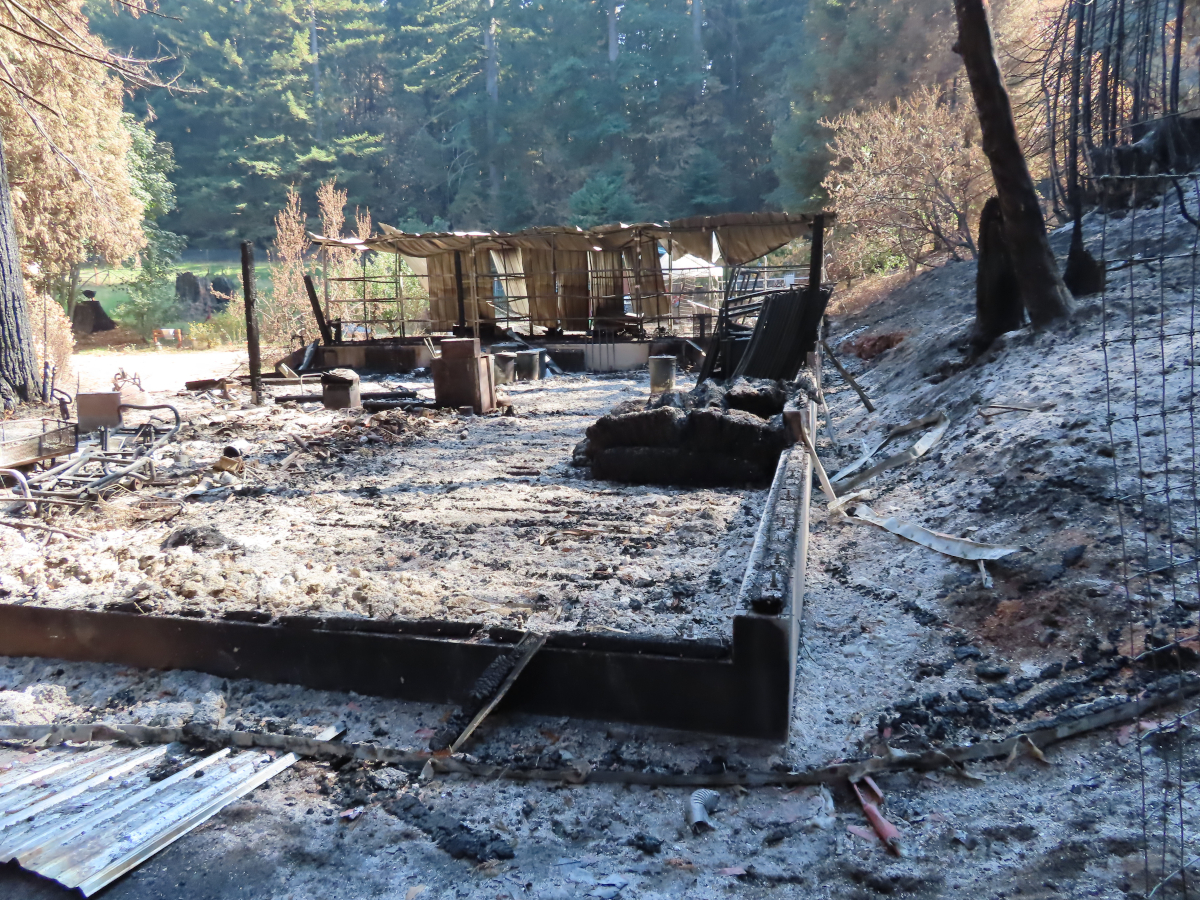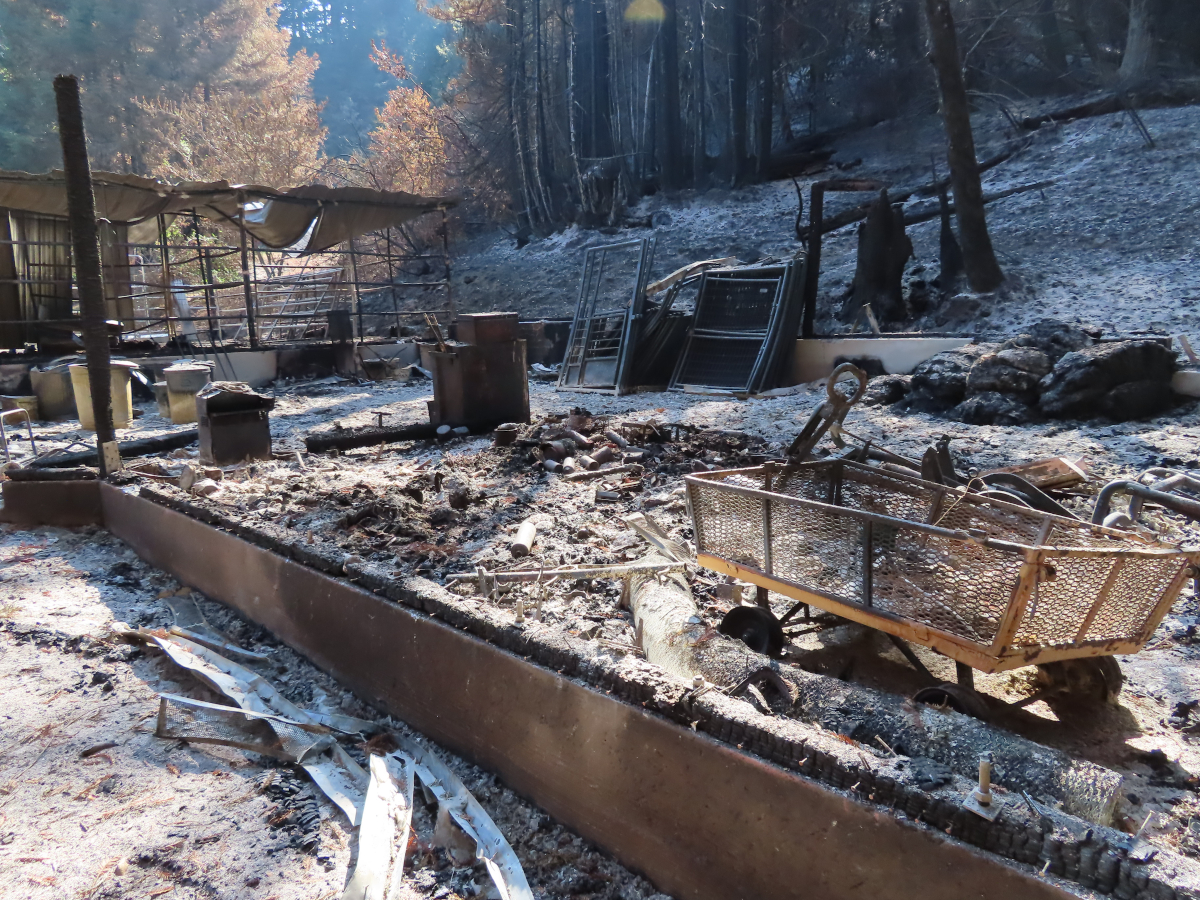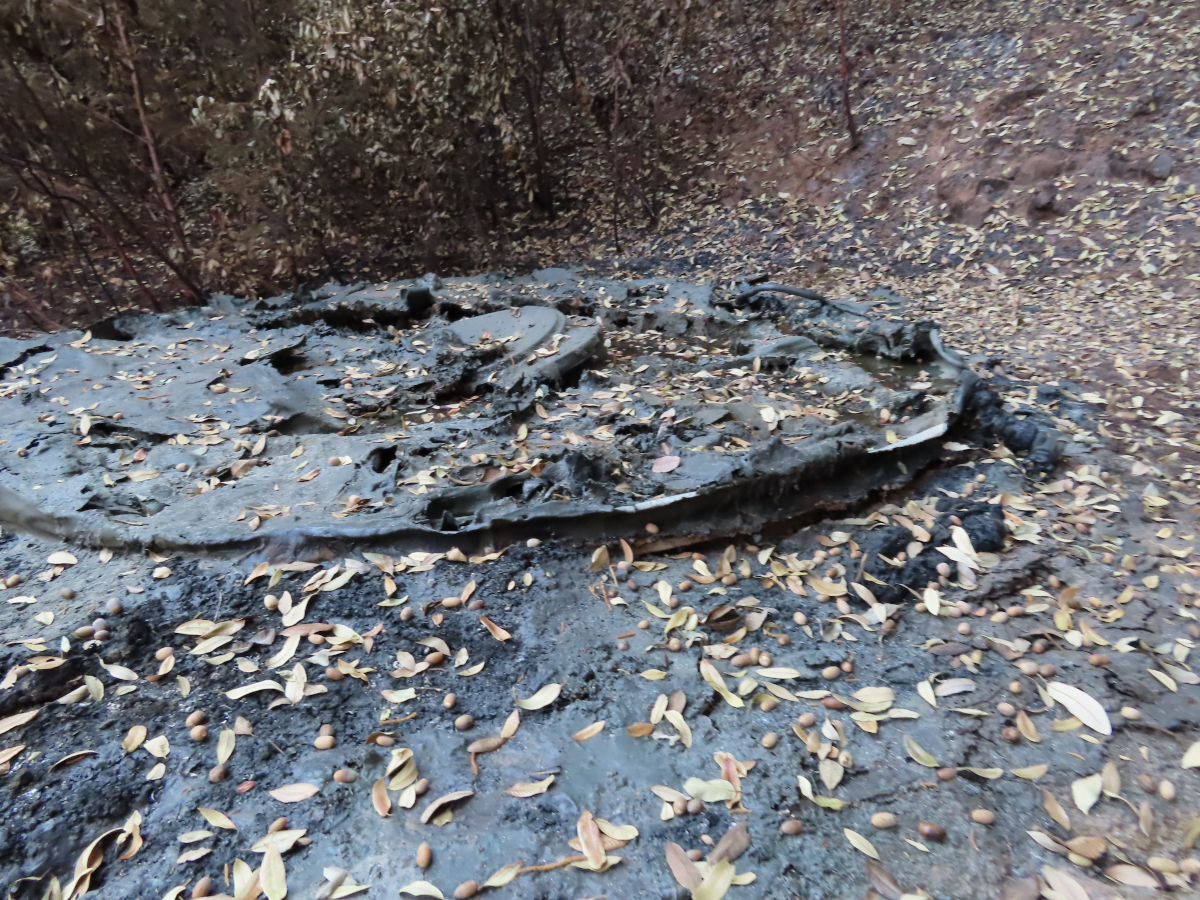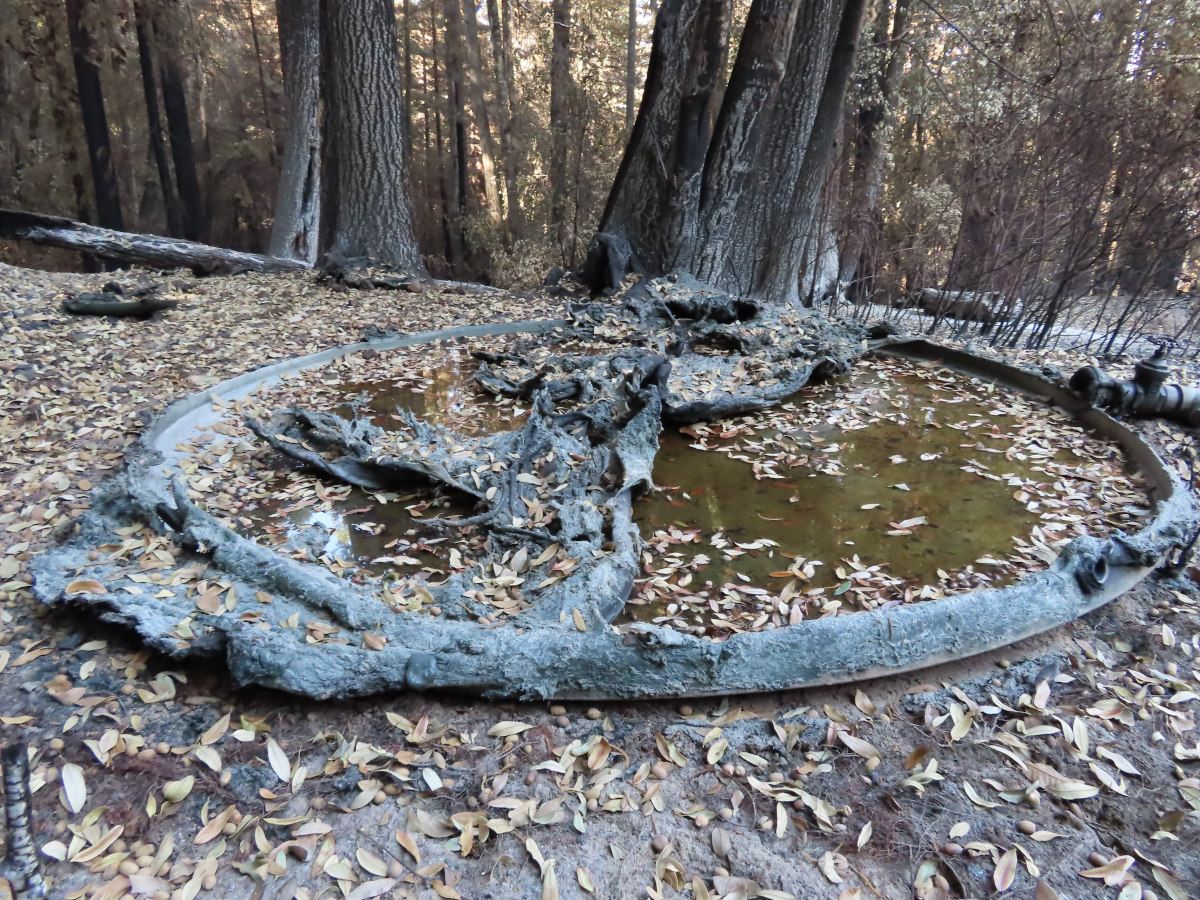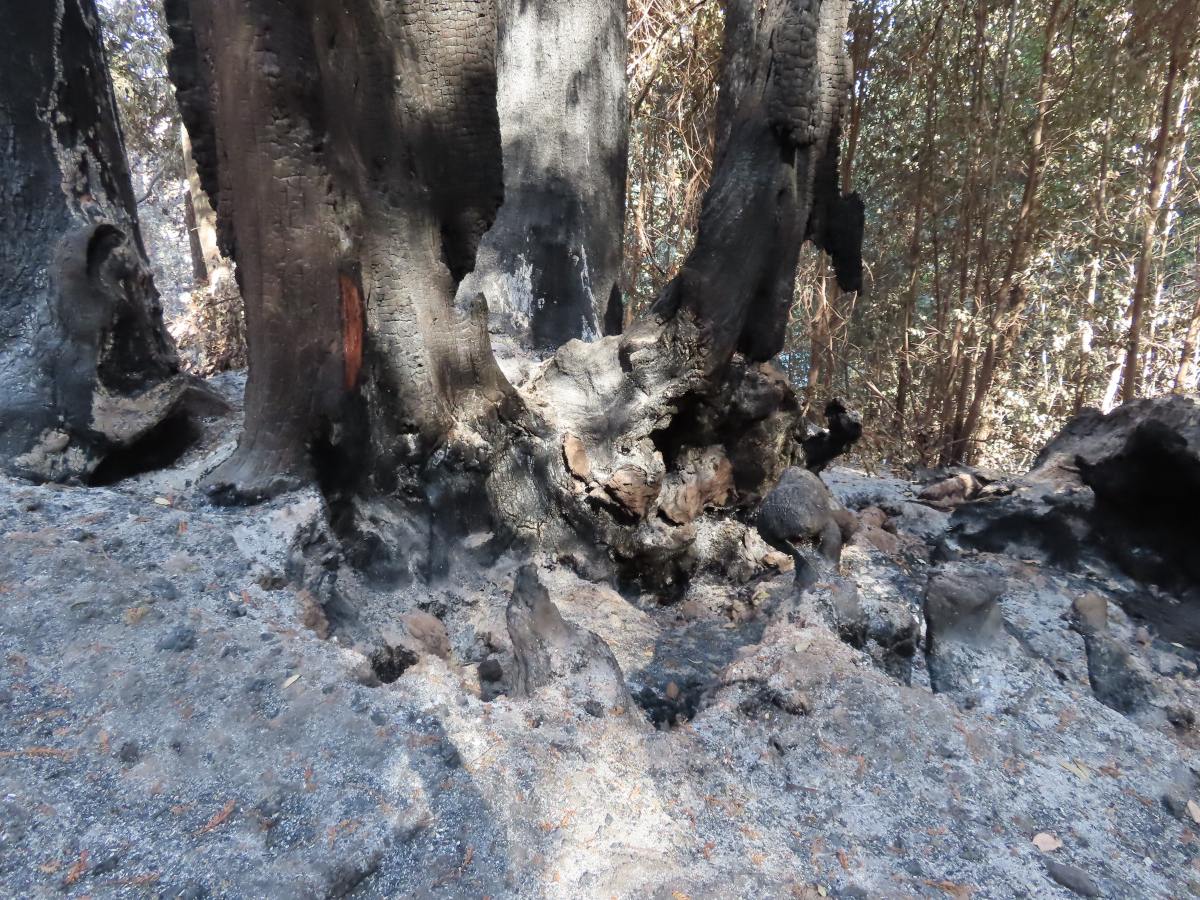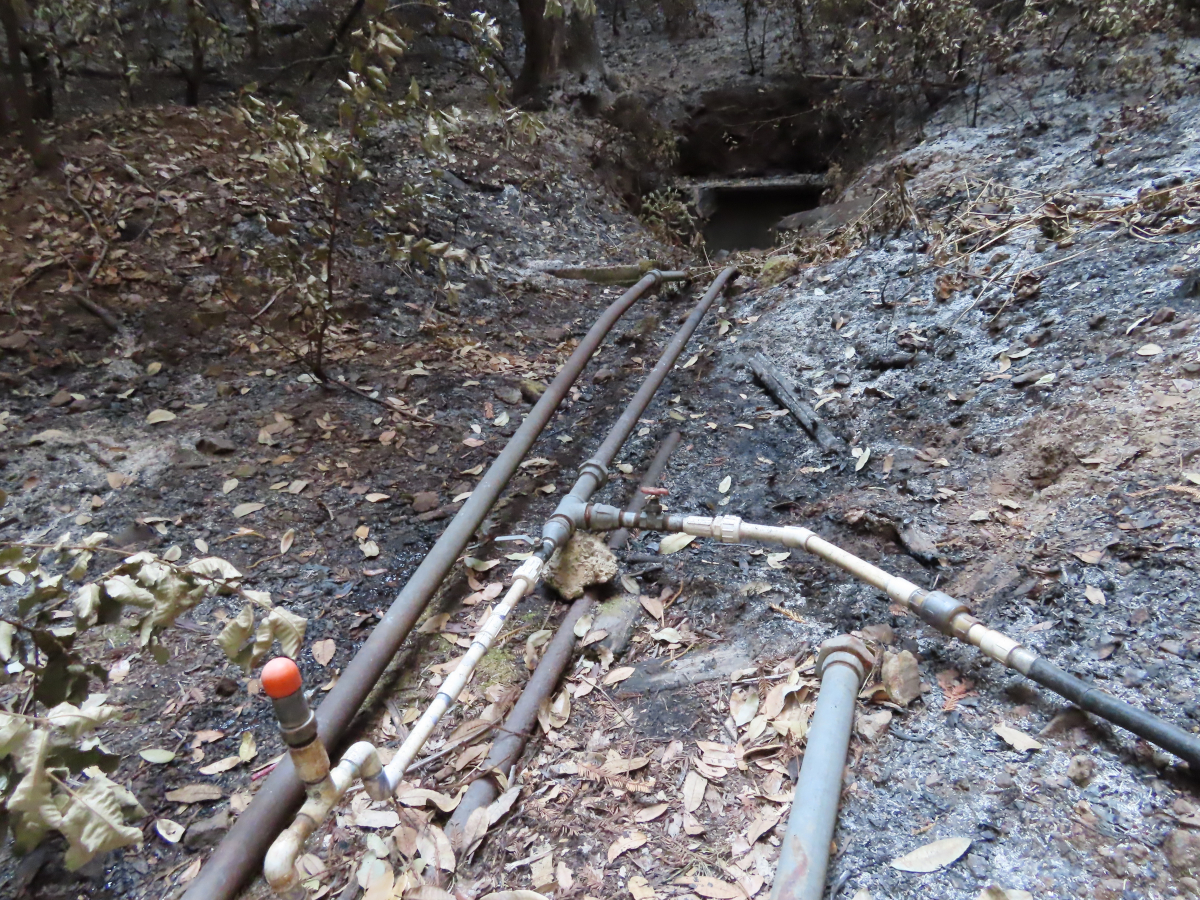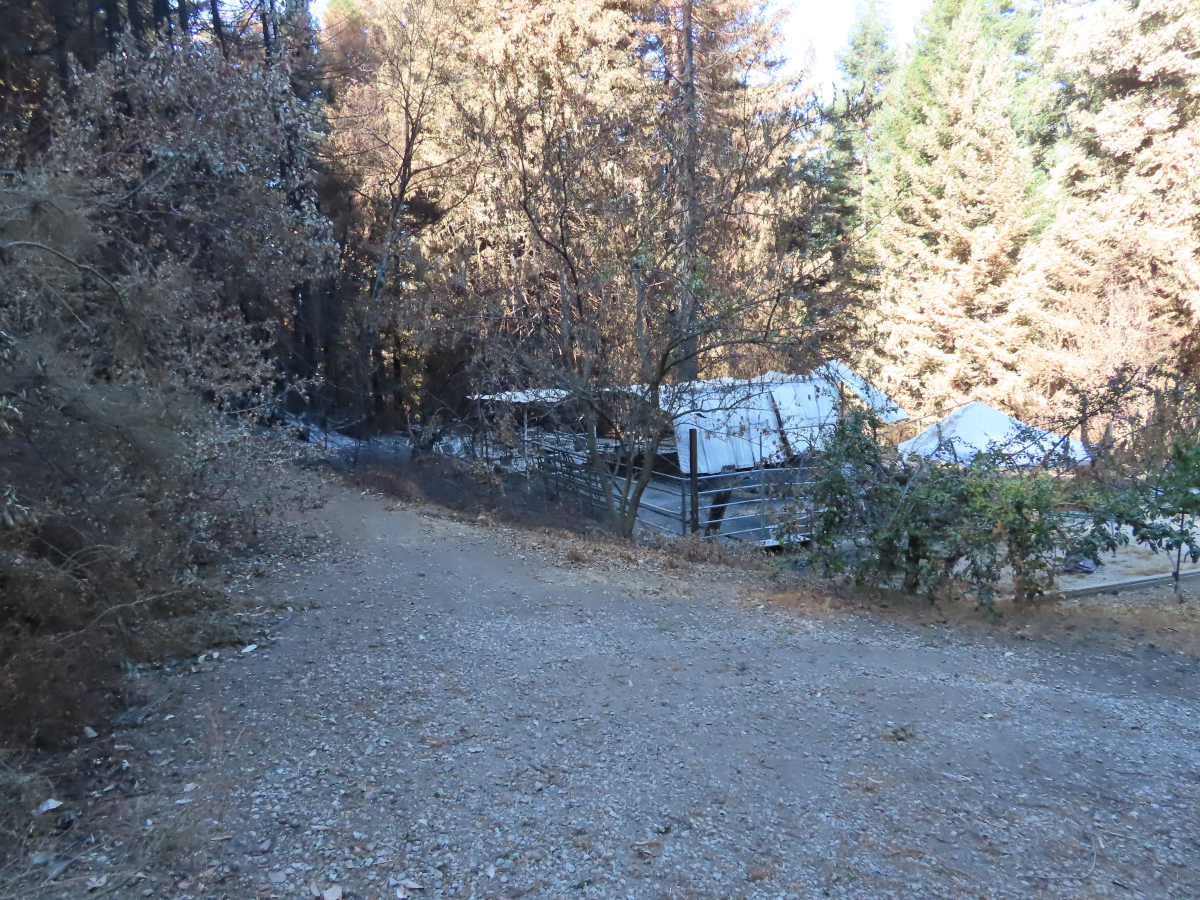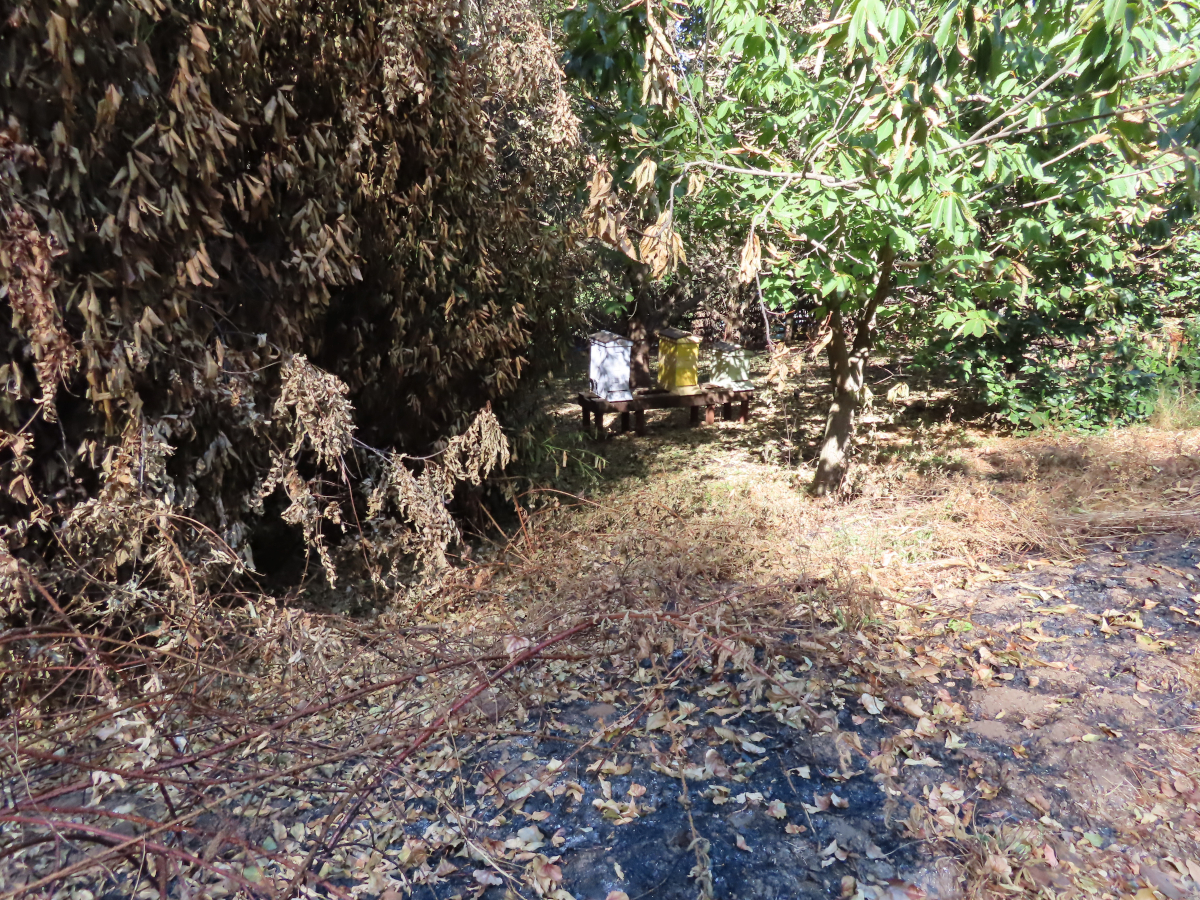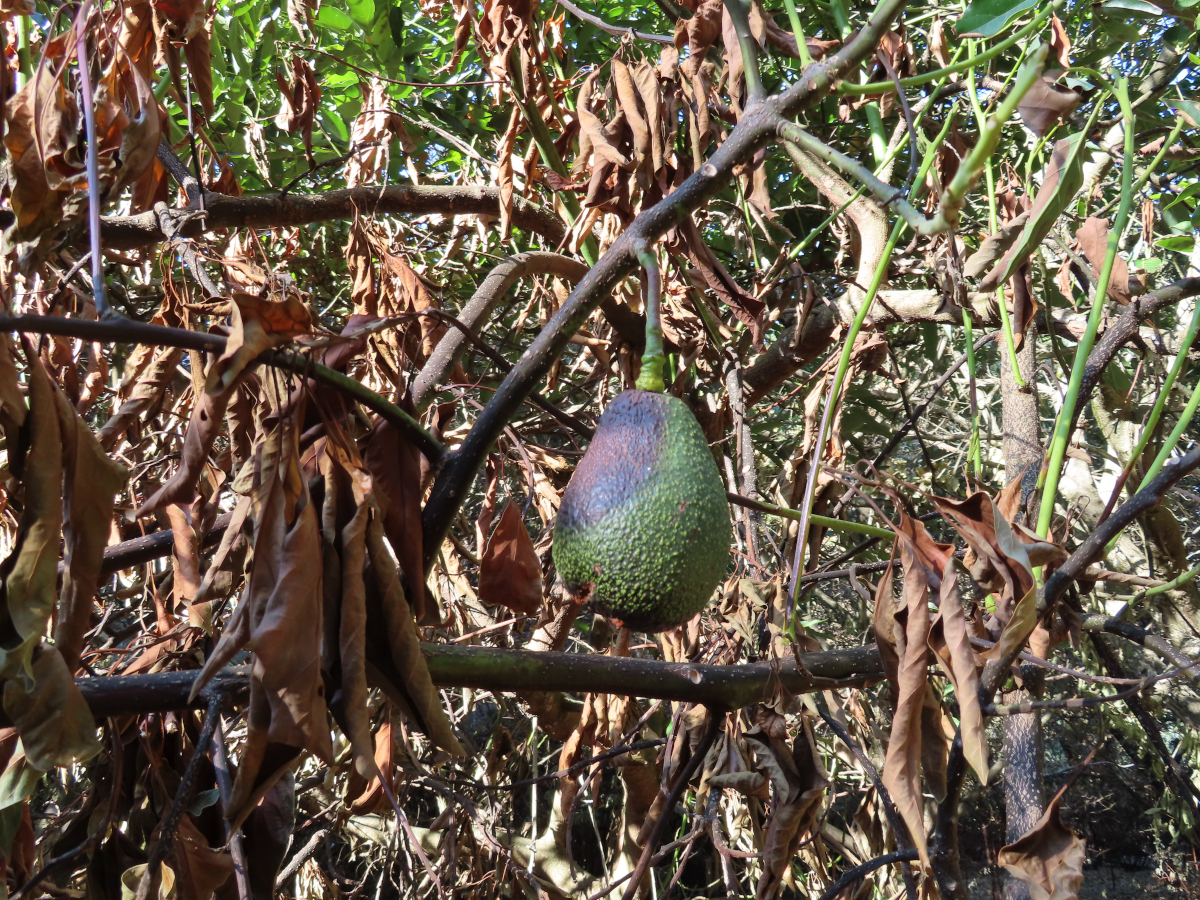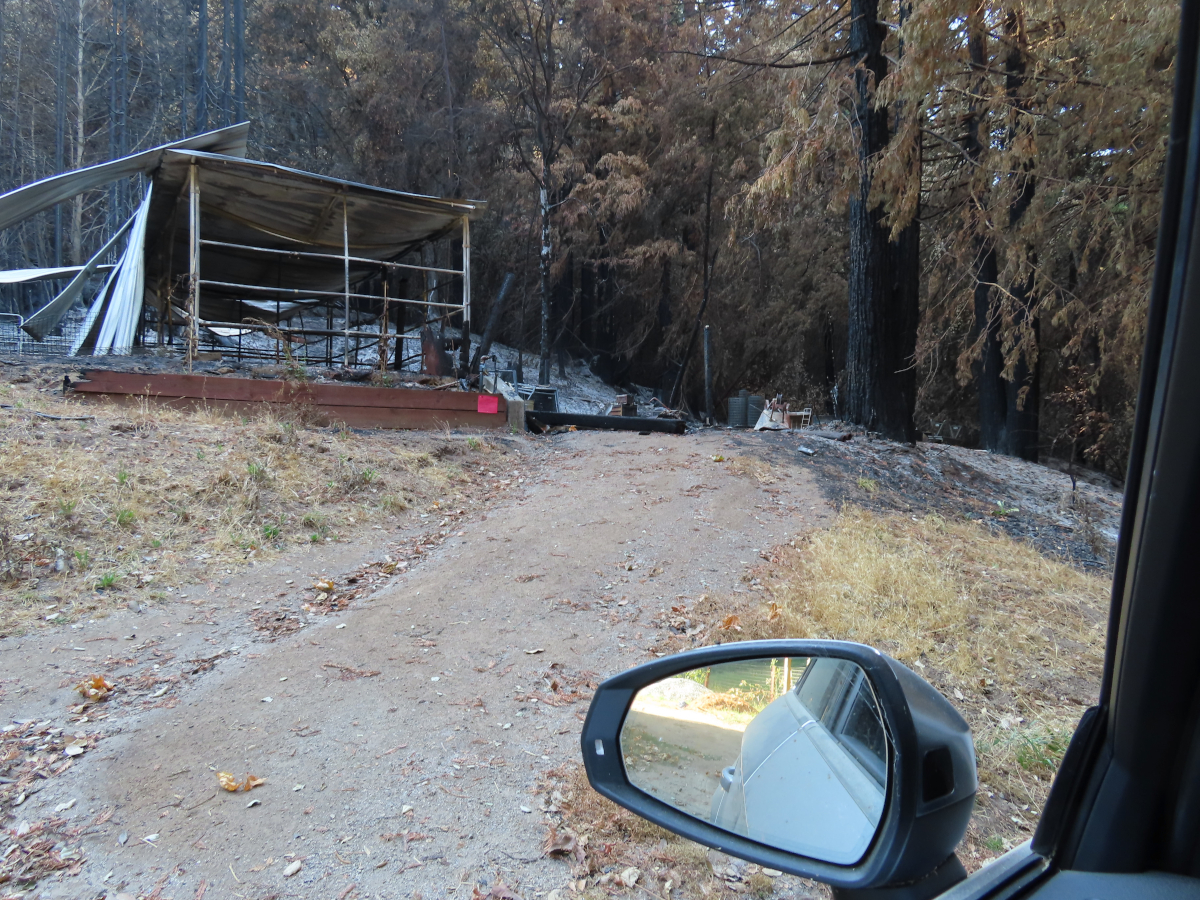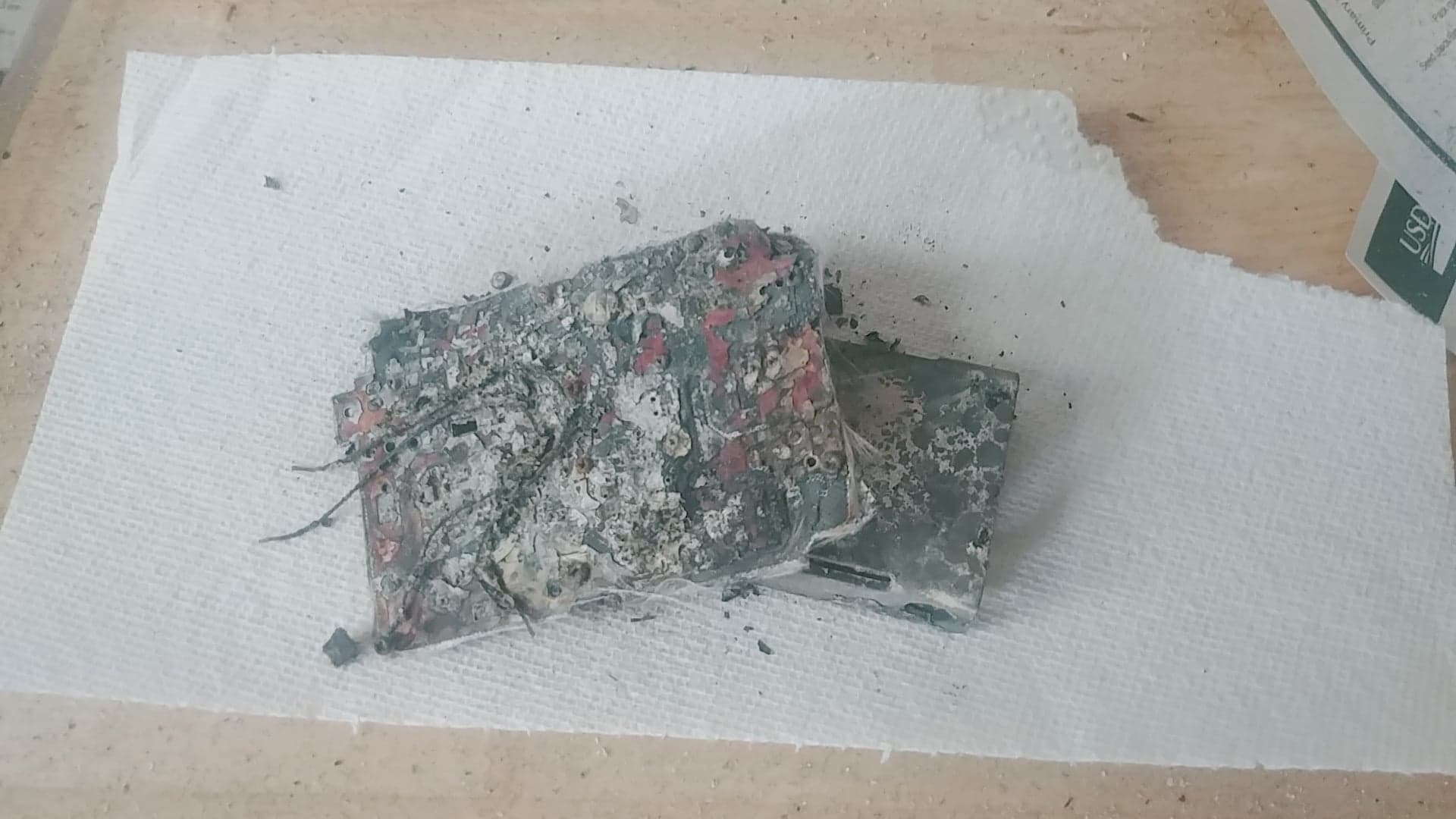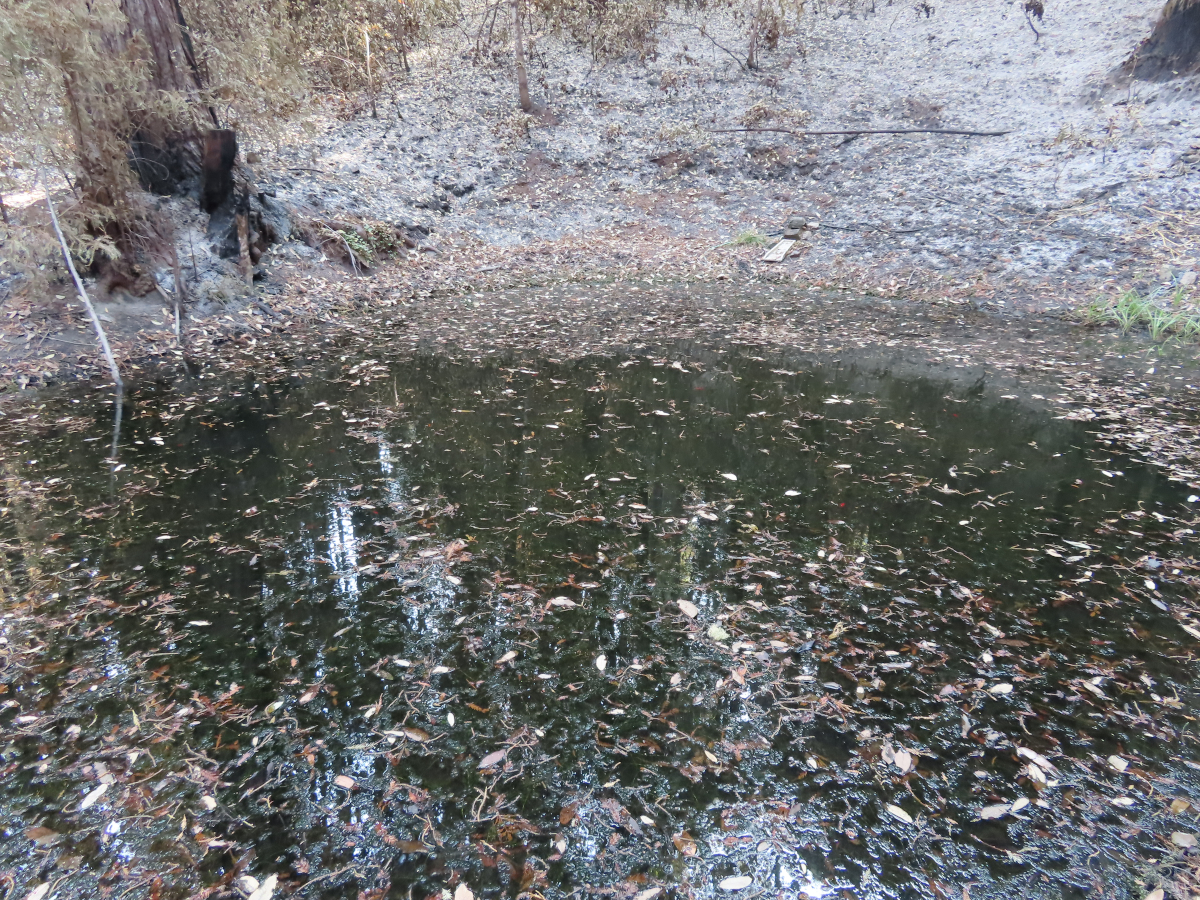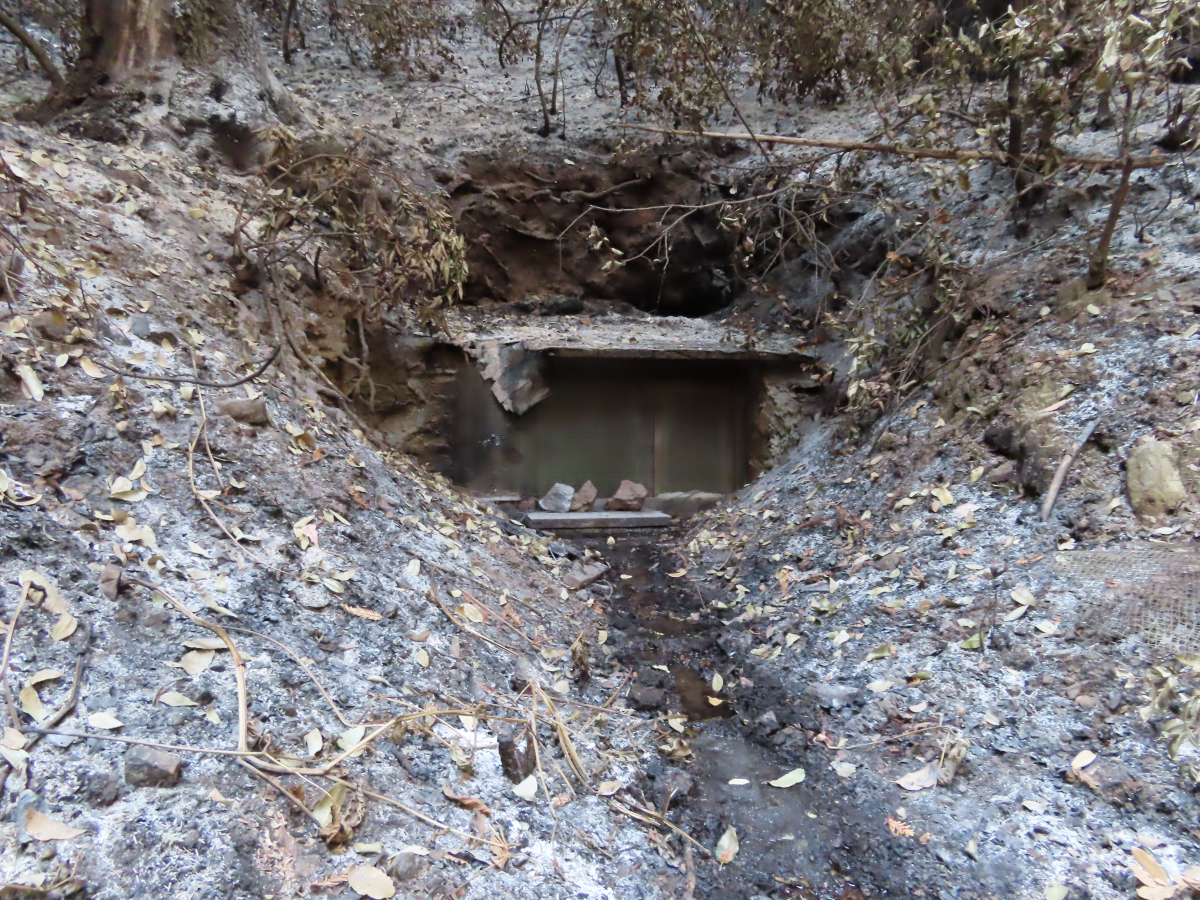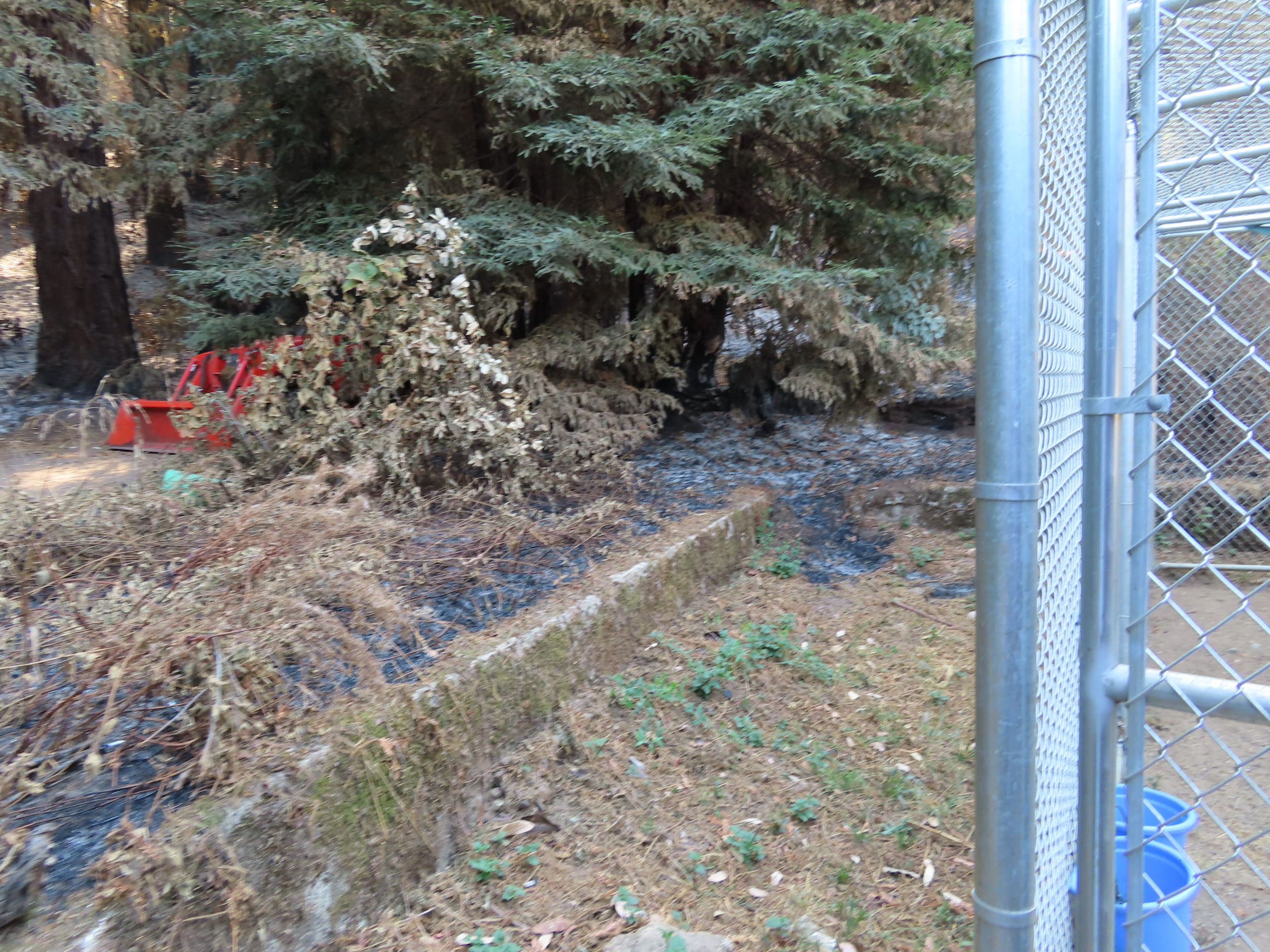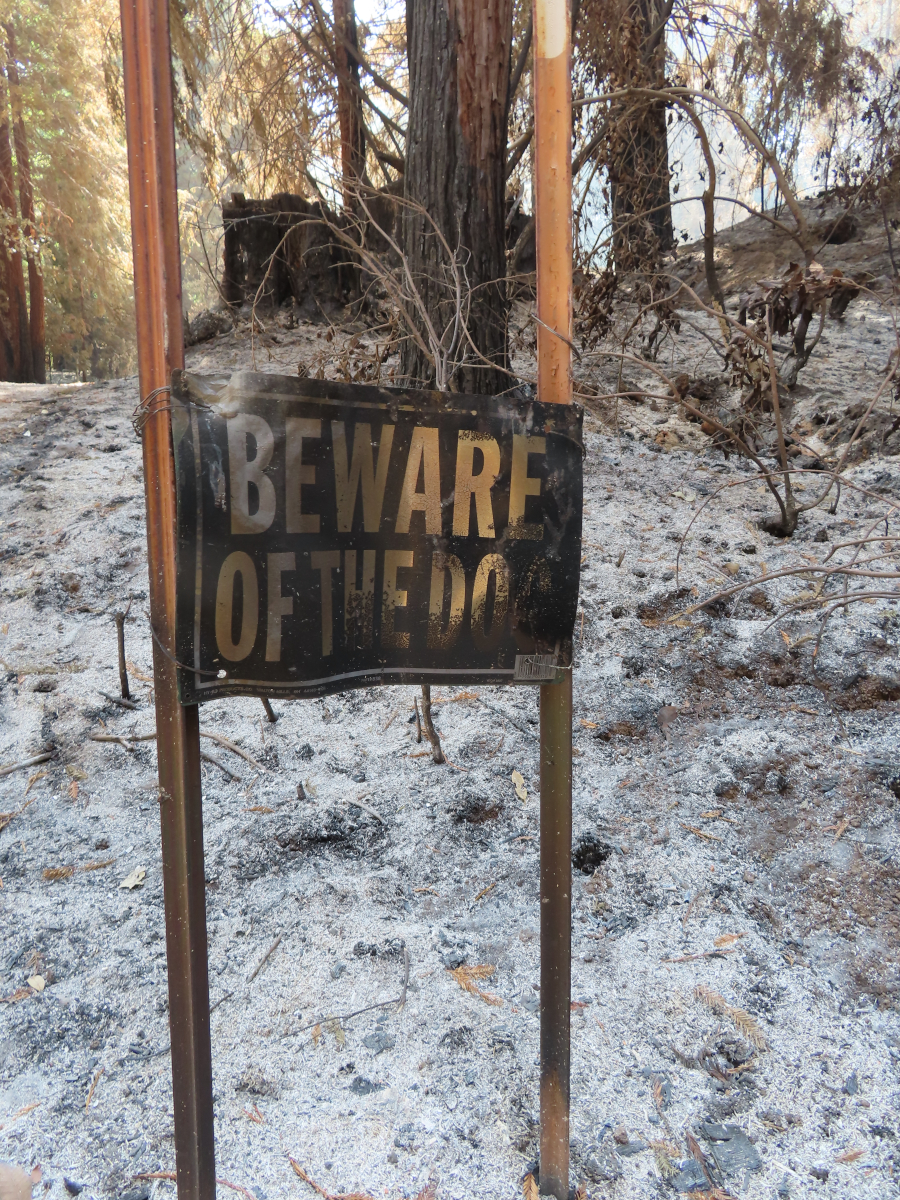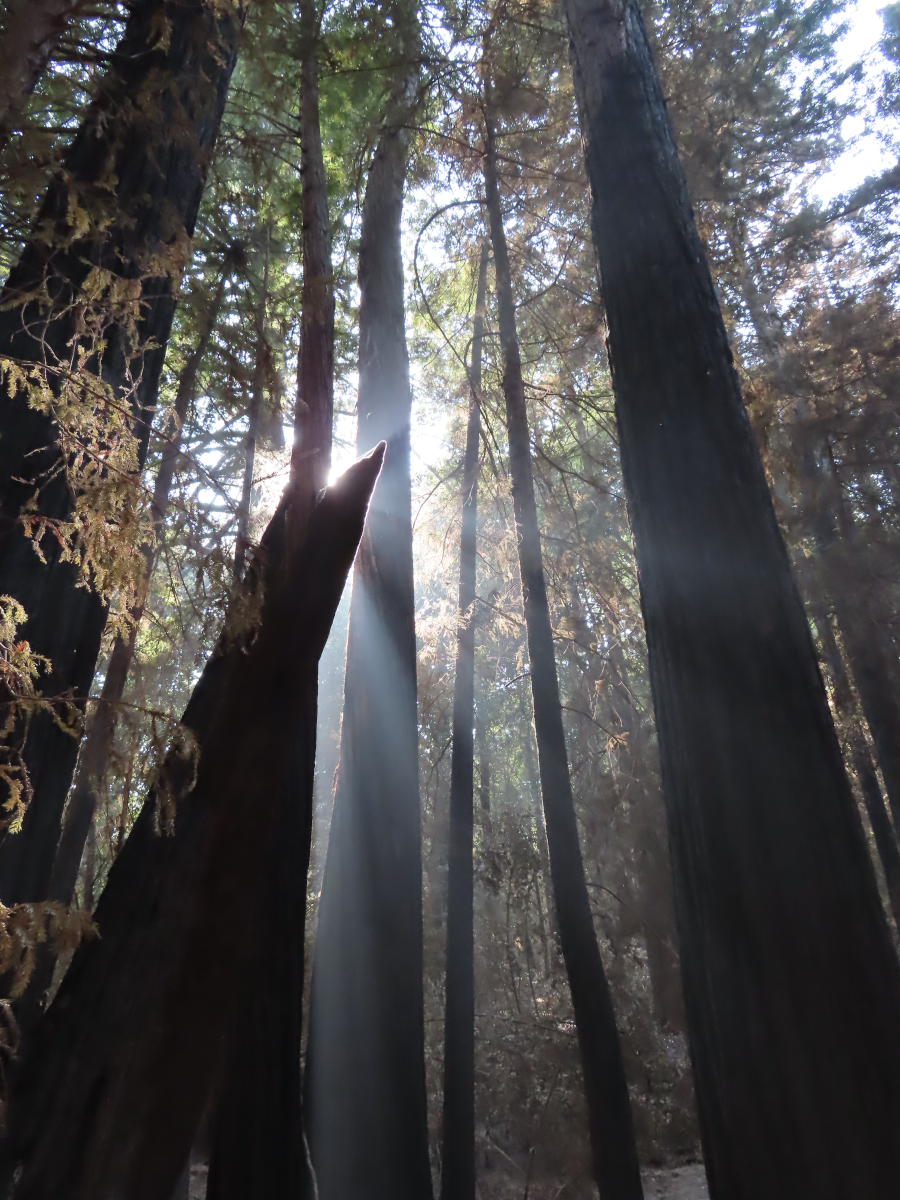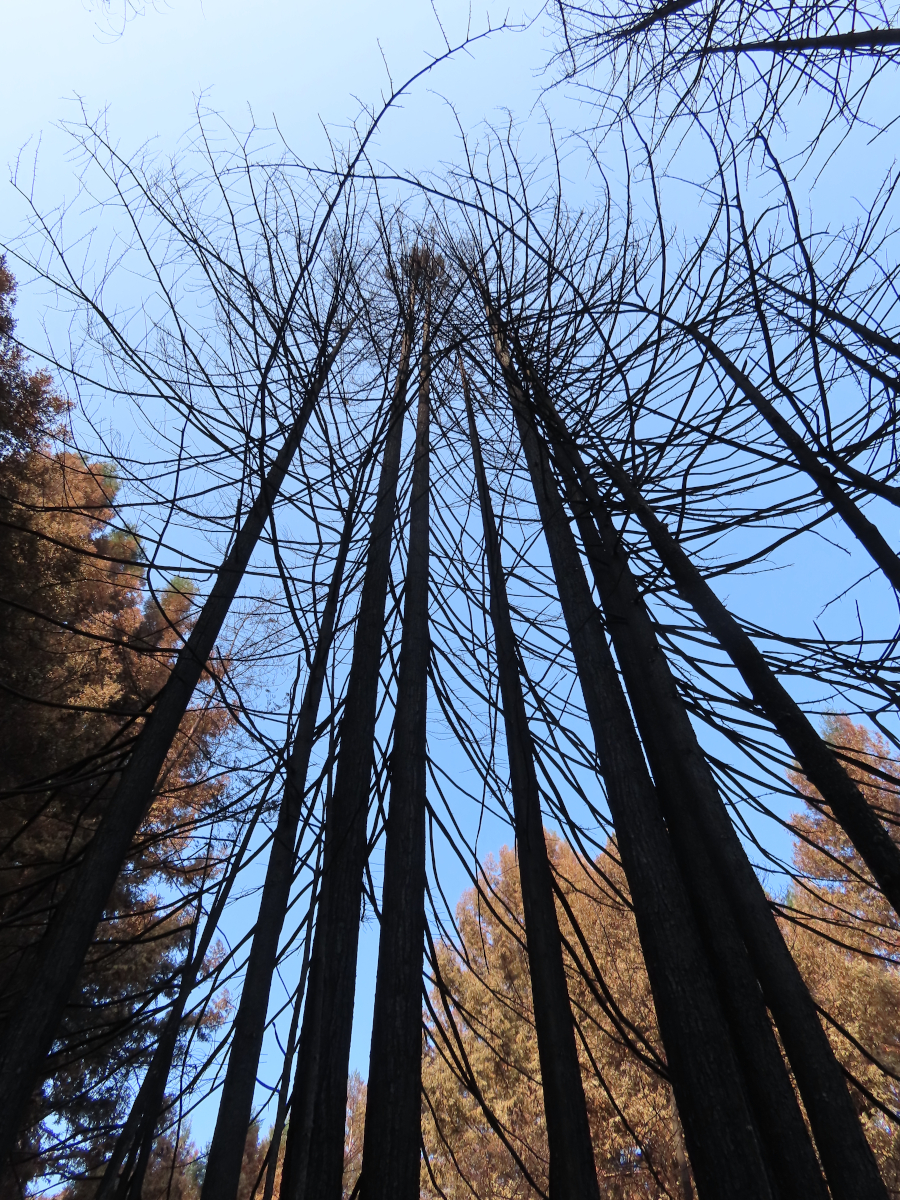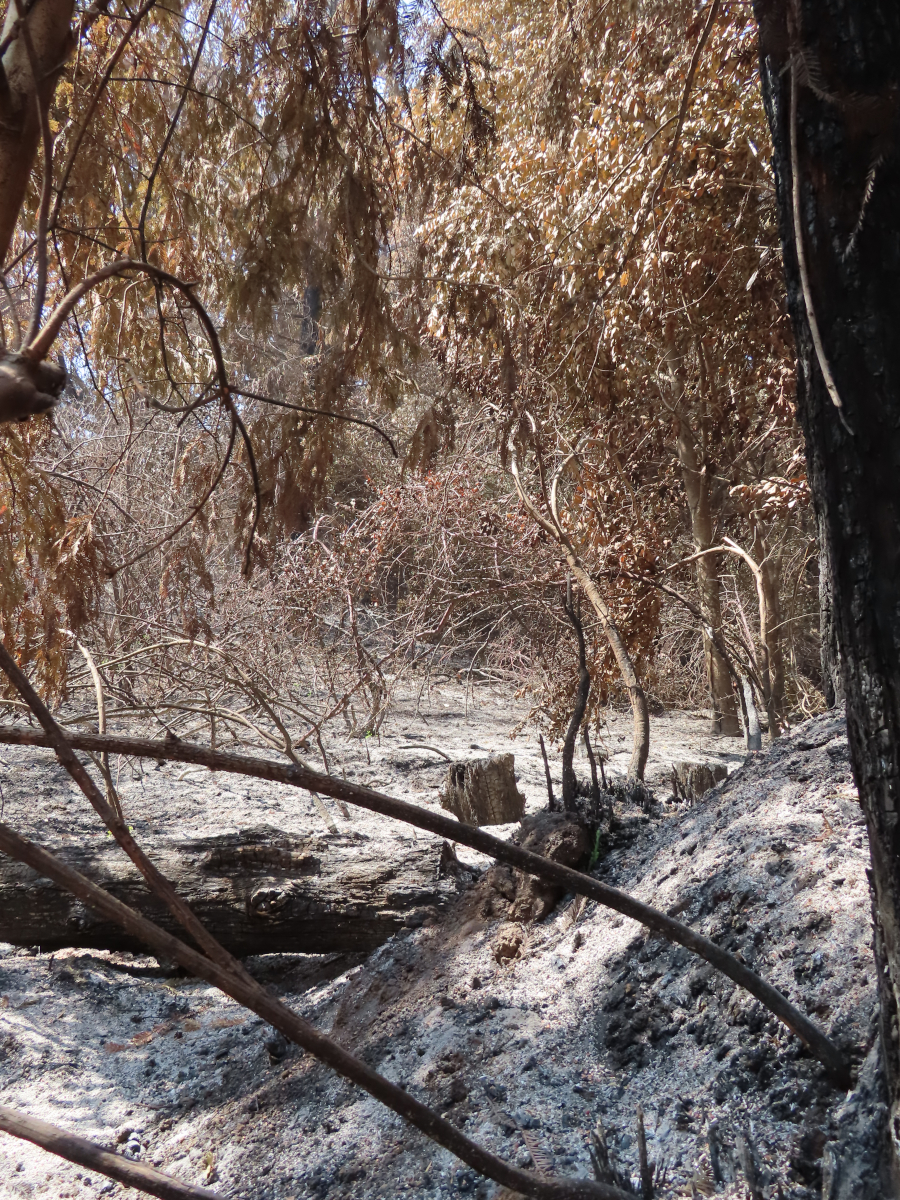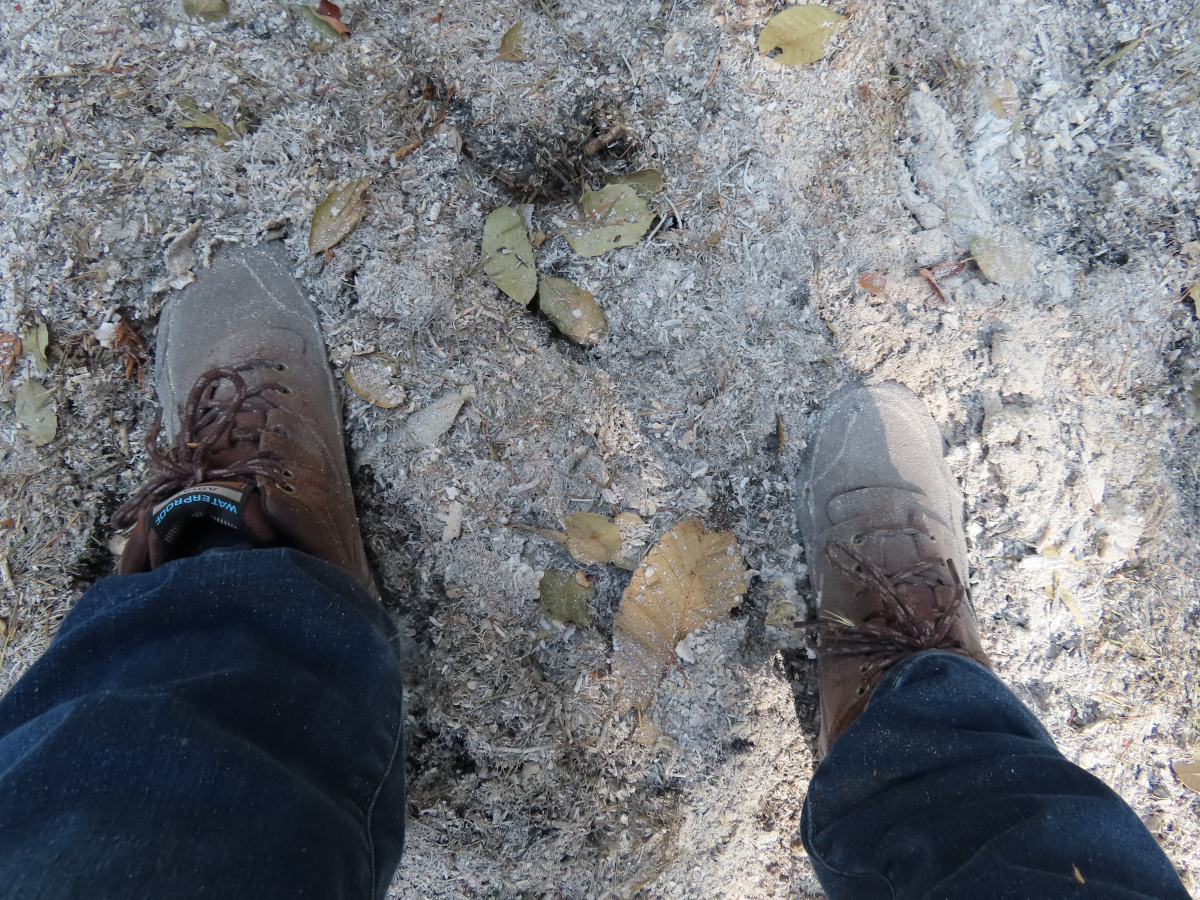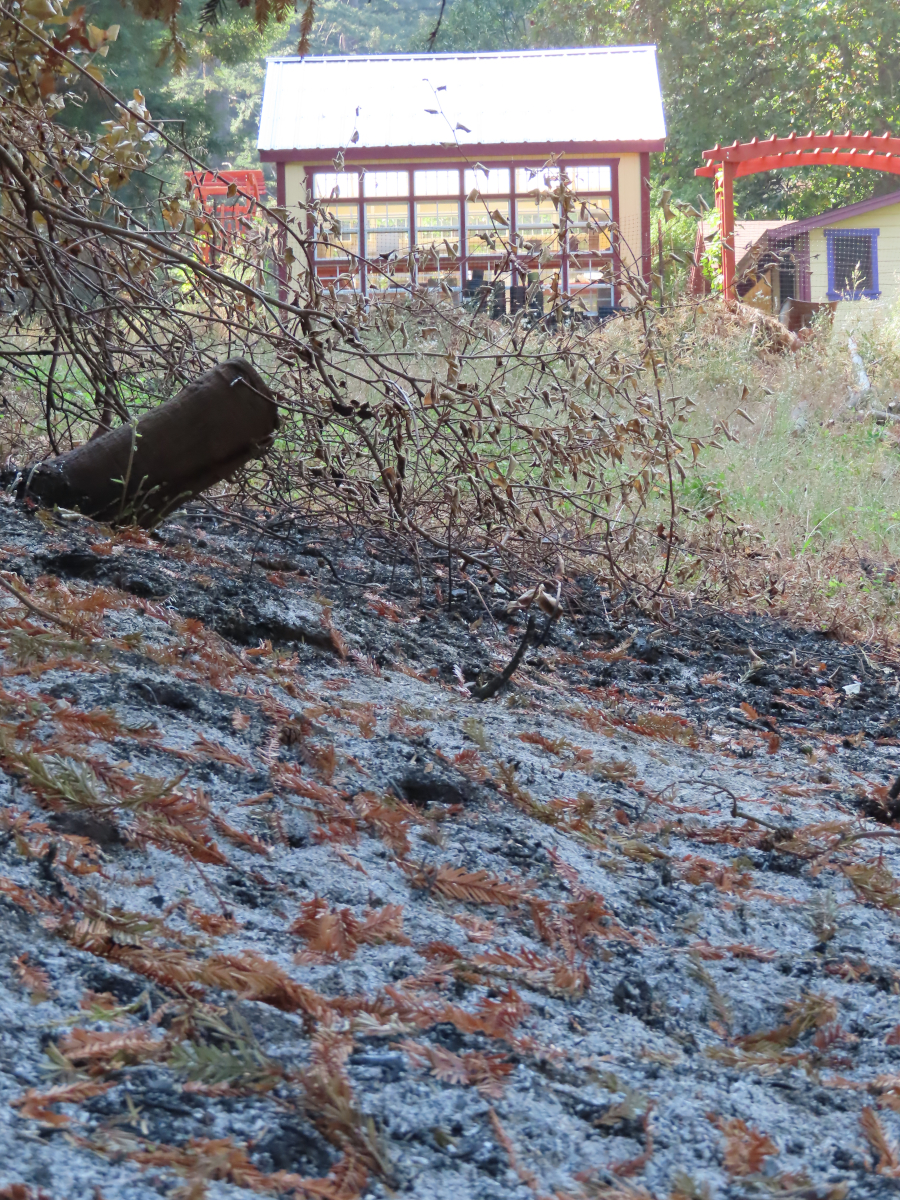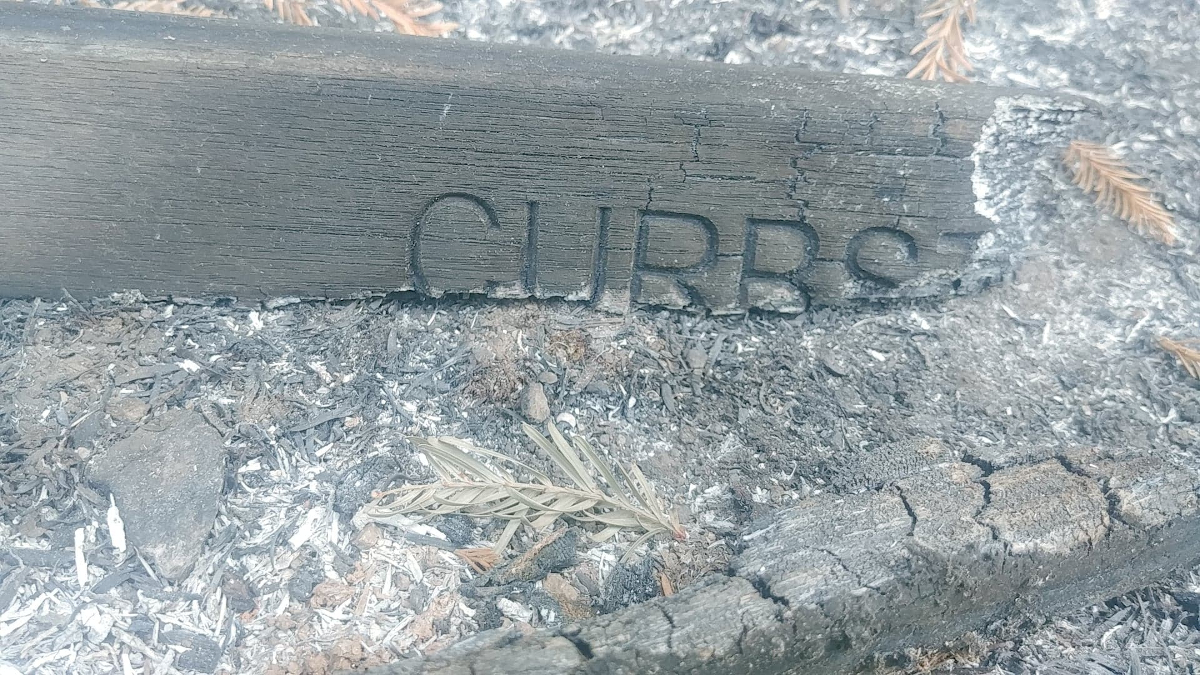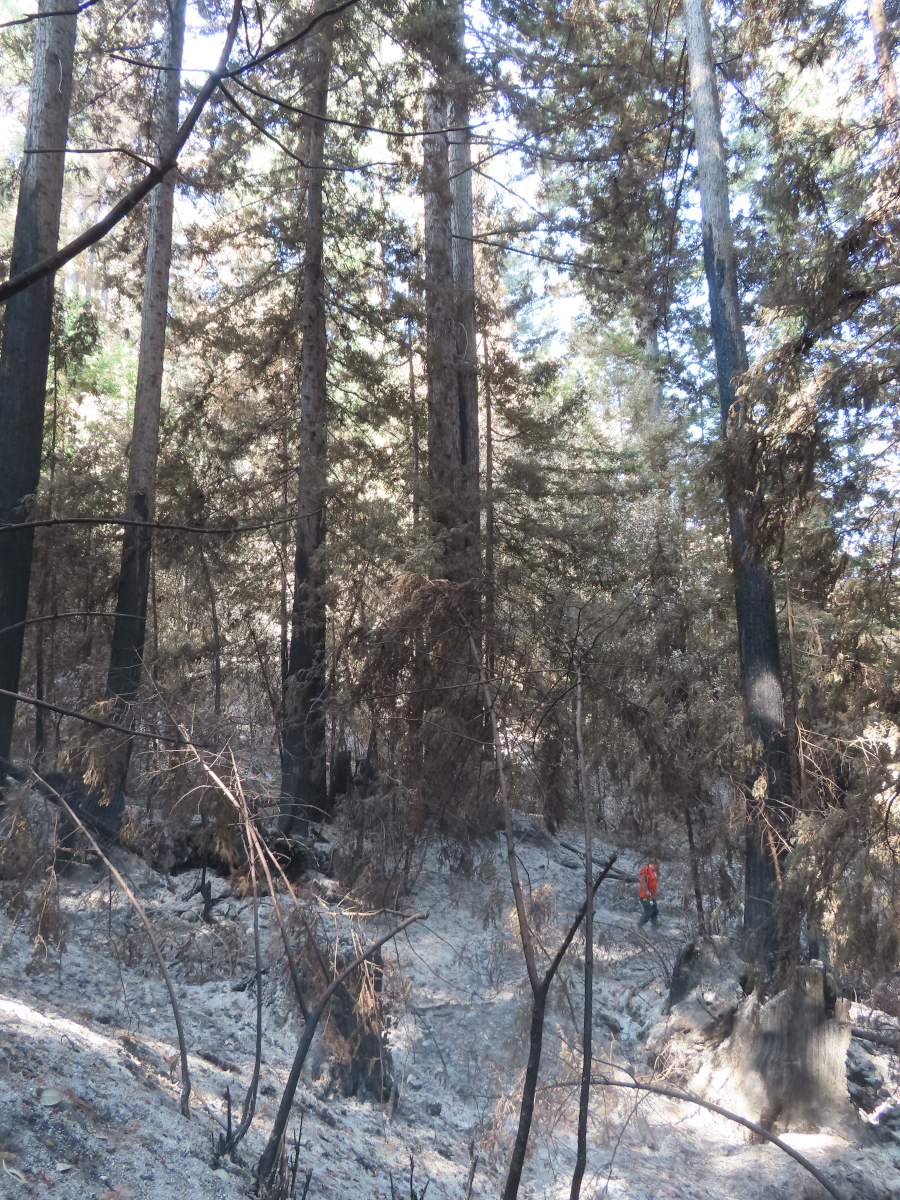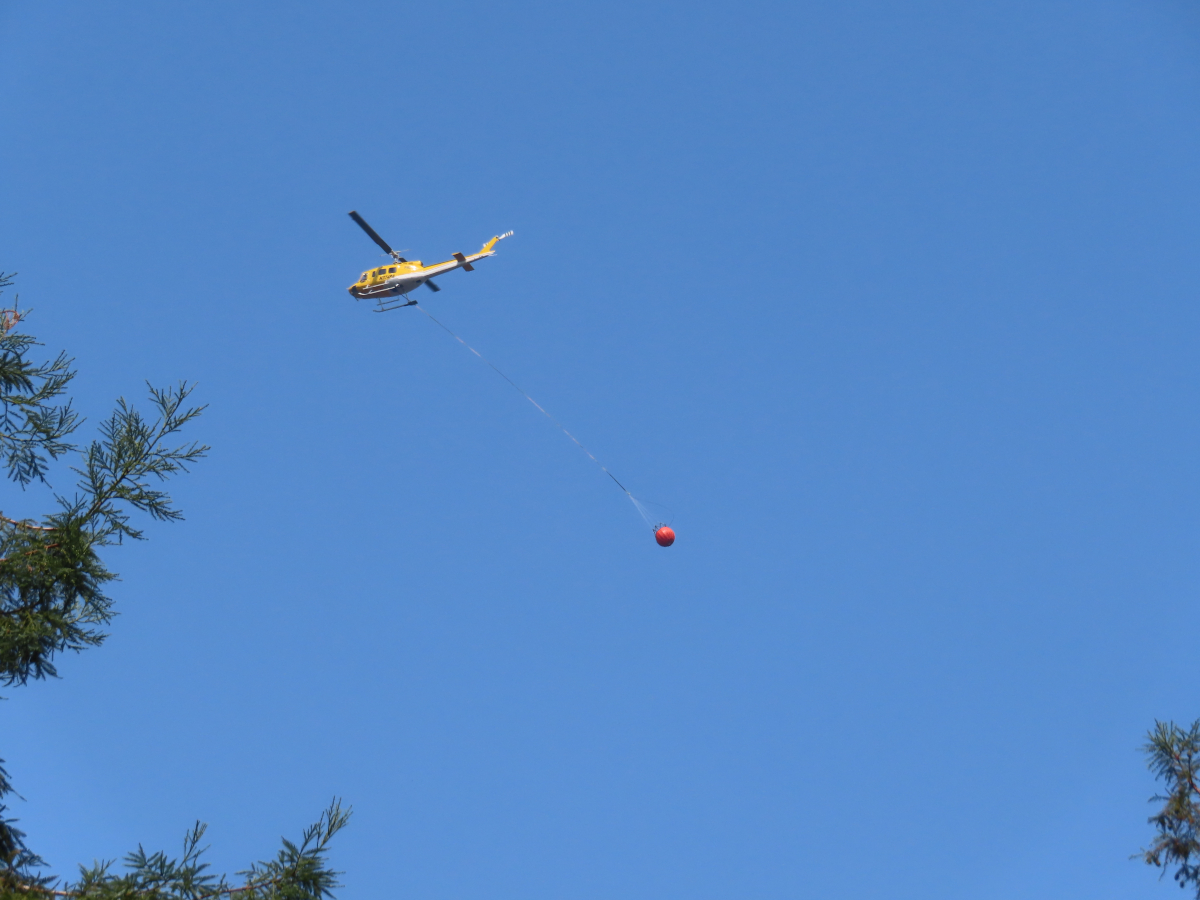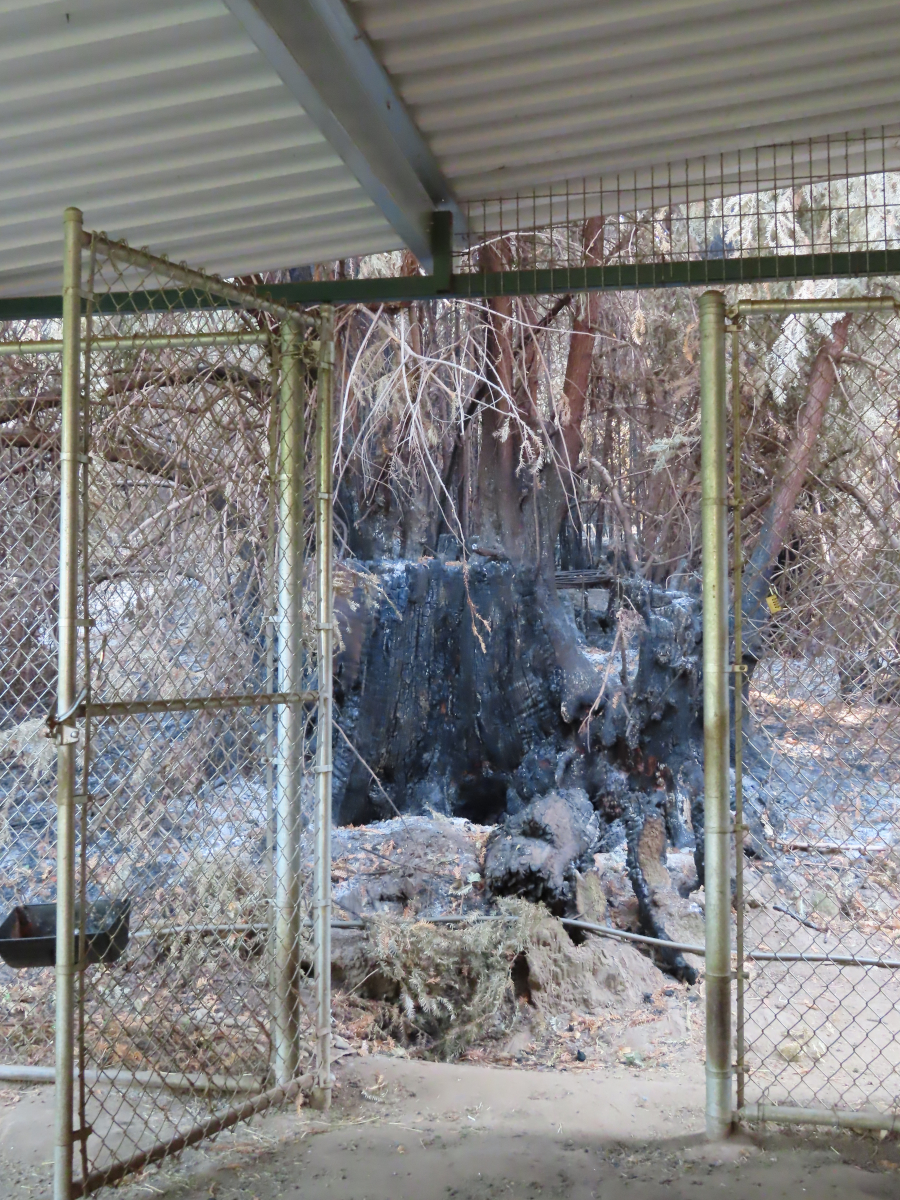Farm News
2020 has been a challenging year for all of us. Just prior to kidding season COVID-19 threw a wrench in farm operations. Just as we adapted to that ‘new normal’, our worst fears were finally realized. The firestorms that have been plaguing California in recent years, finally arrived, and we took a direct hit.
A series of fires were initially sparked by a dry lightning storm across the region on August 16, 2020. At the time we weren’t overly concerned, as they were concentrated on the San Mateo/Santa Cruz county border, well north and west of us. However, an unfavorable wind-shift caused those fires to merge, and explode, increasing in size by over 43,000 acres in a mere 24 hours. The fire was completely unprecedented for this region.
The farm is situated in what was once coastal rain forest. However, over the last 15 years weather patterns have shifted, and little to no coastal summer fog exists in this area any more. As such, traditionally damp redwood forests are now tinder dry, and explosive. We witnessed that first hand during the CZU Lightning Complex fire.
After being repeatedly assured that the fire was of no immediate threat, on the night of August 18th, in the middle of evening milking, fire scanner chatter suddenly became chaotic. Just north of us, in Boulder Creek, residents suddenly found themselves fleeing in the dark. Attempts to reach friends were futile, as residents scrambled to evacuate the narrow valley area with limited egress. While listening to the scanner we could hear that Cal Fire had no resources to respond to the rapidly expanding fires, and our primary evacuation route was about to be closed. This was critical, because with livestock to evacuate this was the least cumbersome exit to take with a trailer hauling livestock. The other route is sinous and treacherous.
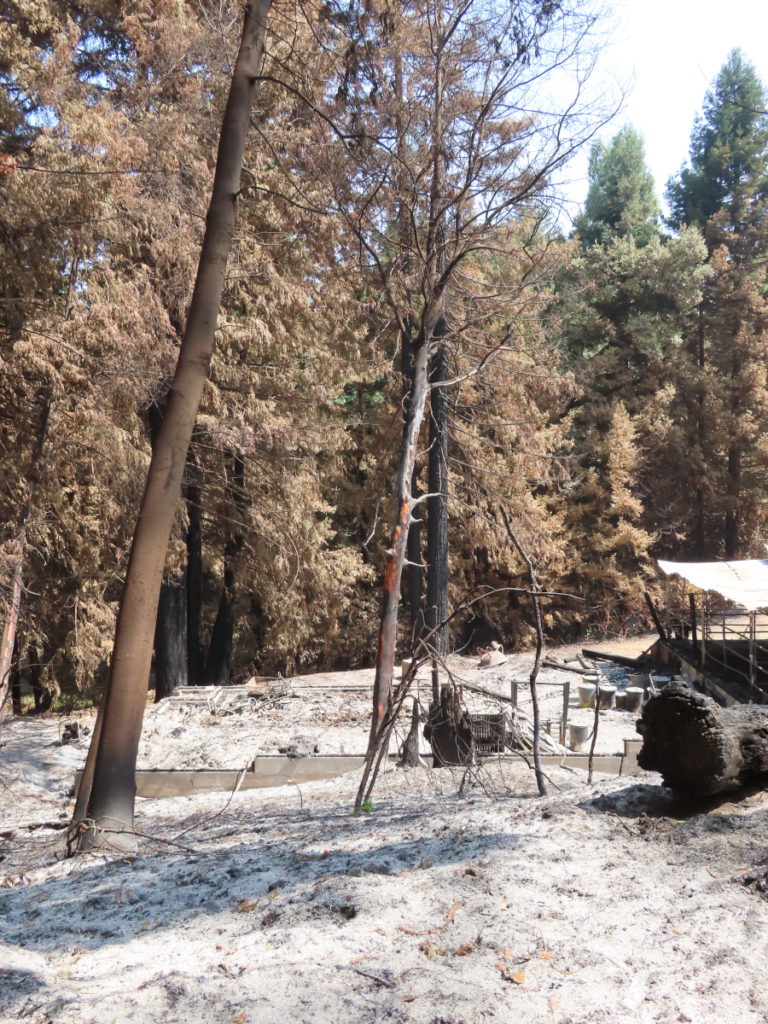
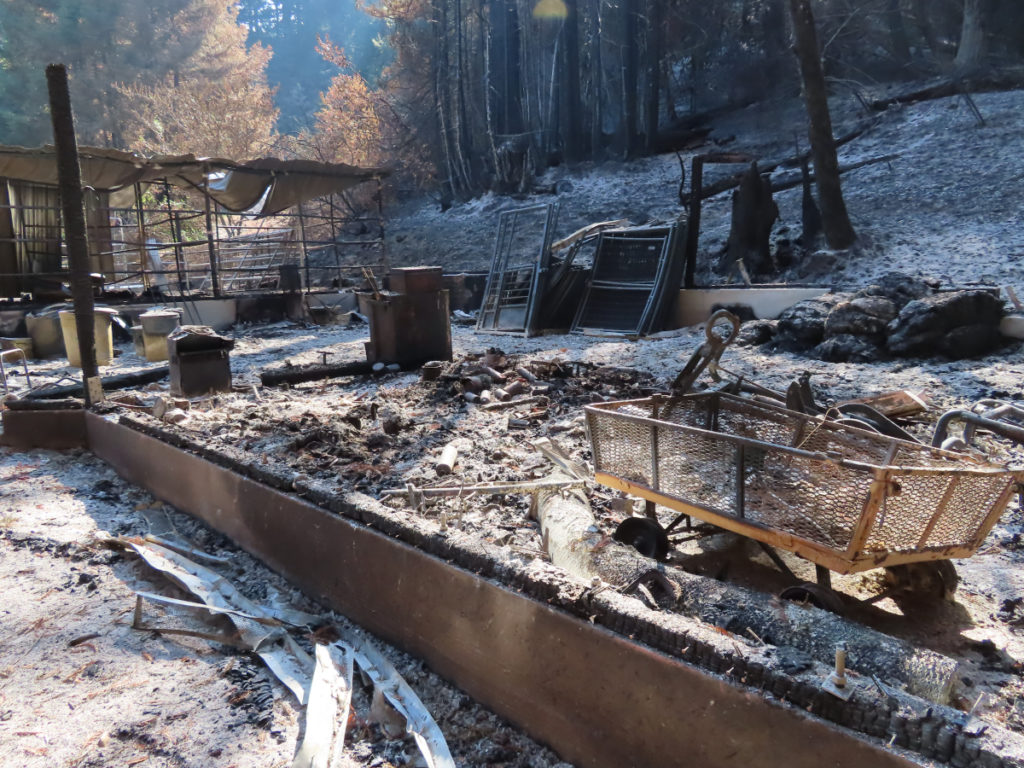
We quickly realized, that despite not officially receiving any warning or order to leave, we needed to quickly load animals, and get out. Time rapidly was starting to work against us. 24 hours previously, our alternate exit had been blocked by downed trees, poles and wires from the storm, and leaving suddenly felt urgent.
The next 10 hours were a living hell. While wrapping up evening milking, I was forced to make the list I never wanted to be forced to make. We were one towing vehicle down, and I had to make the list of animals that would make it on that first trailer out. There wasn’t time to be sentimental. Unemotionally, and matter of factly, each animal was leashed, and loaded. The remainder of the herd was turned out in pasture with the livestock guardians. After the Santa Rosa, and Camp Fire in Paradise, it was abundantly clear that modern fire behavior may not afford us time to leave, so we had been irrigating pastures in case of having to fall back to Plan B. We exercised Plan B that night, at 2AM. Not a plan we ever wanted to use, but grateful we had considered it.
With ash, and charred tan oak leaves falling around us, we secured the first load of goats, and immediately set out for our known livestock evacuation center, at the Santa Cruz County Fairgrounds. Our ETA was 3AM, and as attempts to secure extra trailers at 2AM had failed, our hope was to arrive, unload, and turn around to pick up the next group. Those plans were seriously thwarted. Despite the Fairgrounds being closed for most of 2020 due to COVID, On arrival we were informed there were no pens set up, despite being a State activated livestock evacuation center. We would have to wait until daylight for an update.
This part of the plan did not go as anticipated. I will spare you the pictures of 40 goats crammed like sardines in a 16′ livestock trailer, with liquid shit running out the back doors into the parking lot. Does unable to lay down, and us unable to reach them to feed or water them, all the while infuriated that there was nowhere to offload them, and wondering if the rest of the herd was still alive. Calls to local evacuation teams had been made, but went unanswered.
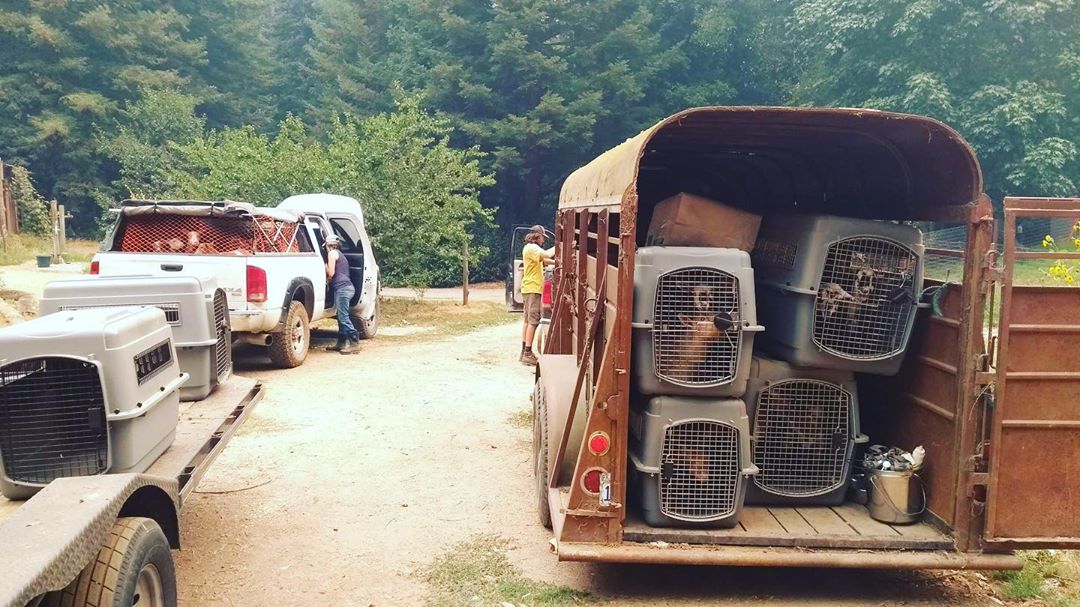

As daylight broke, our anxiety level was going through the roof. Thankfully, as friends awoke, we received offers of help, and our employees met us at the fairgrounds to help with the animals we had brought with us. I stayed with the trailer of goats, while Jon went back up with friends and two more trailers to see if he could even still access the farm. We were forced to leave our entire 2020 kid crop behind during the initial evacuation, and we had no idea if the farm or barn was still standing. The fire exploded by 43,000 acres that night, but thankfully had not crossed the road we used to evacuate, yet.
A text let me know they had made it back in, and were frantically loading kids into crates and trailers. The rest of the does and babies were evacuated in the next round. But that still left the bucks.
As the kids were finding their way to the fairgrounds, we had finally been able to source hay and straw, pens were being assembled, and with the help of our stalwart crew, were getting animals situated.
By mid-afternoon 142 goats were evacuated.
With each offical passerby, it became obvious that the County didn’t realize farms of this scale still exist. While they are few and far between, they do, and the resources at the Fairgrounds are still needed. That became very apparent as more evacuees arrived, with Llamas, Pigs, Sheep, Goats, Horses, and hundreds of Chickens.
Unfortunately, as the day wore on, the heat, ash, and smoke was becoming too intense, and a handful of wethers were not loaded in the final trailer. When the bucks were unloaded, I was looking for the wethers, and informed they couldn’t load them without the bucks trying to escape the trailer. Unfortunately, the wethers were left in their pen out of concern for predators, and not put out in the pasture as requested. At that point we had to wait, and hope the fire would miss us.
It did miss us, the first night, but on the evening of the 20th CalFire lit a backfire, that they lost control of as the wind shifted, and a fierce fire raged down Alba Road, consuming everything its path. The hay barn, workshop, well and spring water infrastructure, and devastatingly the buck barns were burned to the ground, including the wethers penned within. There was almost no sign of the enclosure, the roof completely collapsed, and just a concrete slab remained. The glass windows in the hay barn were melted into blobs of blue glass due to the intensity of the fire.
Our evacuation plan was pretty solid. Leave early (we did) and irrigate pastures incase we couldn’t get everyone out immediately. Multiple calls to Equine Evac, and Cowboy 911, went unanswered. We moved and hauled as well as we could, but the 10 hour stall at the Fairgrounds, was a killer. Literally. We lost 7 goats as a result. We left TWO DAYS before the fire ravaged the farm, but due to bureaucracy, inefficiency, and CalFire’s ineptitude, we still lost animals that should NEVER have been lost.
I will forever be heartbroken at losing any animals to this monstrous fire. I try to console myself with the fact that so many were safely evacuated, but any loss was one loss too many, and unacceptable. Of the seven lost, my wether, my special sweet snuggly cool dude, Jack, succumbed to the smoke and flames. I am devastated, and heartbroken Jack didn’t make the last trailer out. along with his best buddy Danny, Felix and Oscar, Licorice, Star, and Chip. While our breeding program, 10 years of effort was salvaged, it doesn’t make their loss any less heartbreaking. Pictured: Jack (2014-2020).
Focusing on the positive, the house, and doe barn were spared, and the majority of the herd was evacuated, along with their guardian dogs. However, there is a tremendous amount of infrastructure, and property damage. The boys barns are reduced to ash, the hay barn is gone, the workshop and all of the farm and kidding equipment destroyed. Fences are burned through, and both the spring and well water systems incinerated. We cannot return to the farm until potable water is restored.
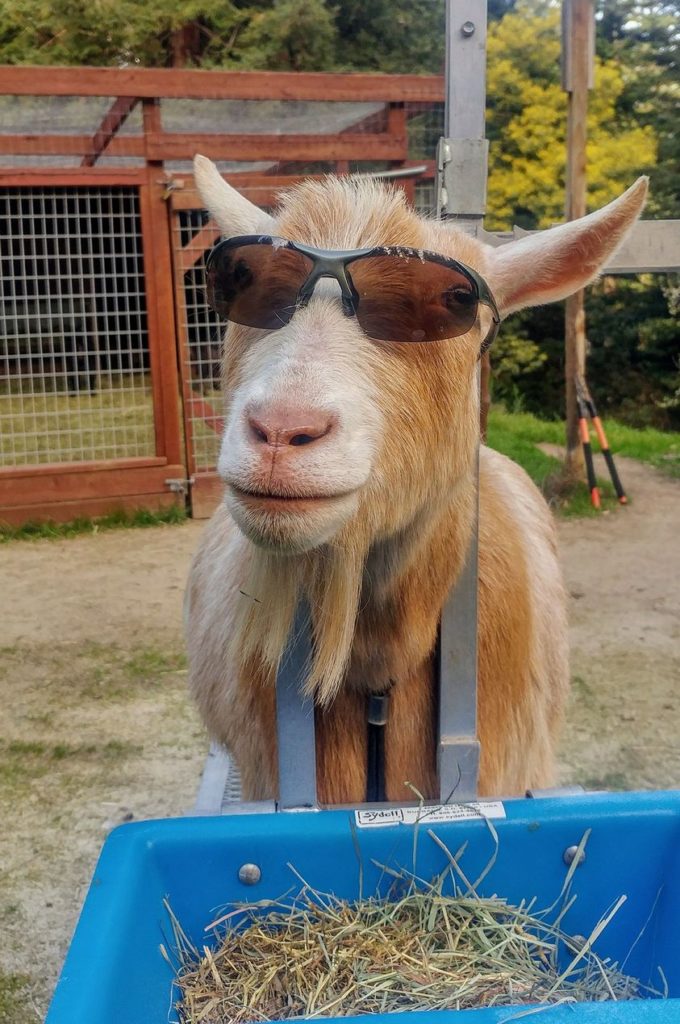
The video shown here is a sample that was taken as a flank of the fire burned upslope from Fall Creek State Park, directly into our property. One of our trail cameras survived long enough to record three hours of the fire burning through, until the camera finally failed as the ambient temperature reached 171 F. Amazingly, although the camera was melted, the camera’s SD card survived.
Our primary focus is re-establishing the spring water system, and constructing temporary, but secure housing for the bucks, while we make the house habitable again. The fire came within 30 feet of the house, so smoke and ash needs to be remediated before we can move back, and work on rebuilding the structures that were lost, and preparing for potential erosion over the winter months. It will all take time, and resources. For now we just need to take life one day at a time…
We would like to extend a special and heartfelt thank you to Roman, Lucy, Sherri. and Ryan for their heroic efforts to help us evacuate the herd. Their courage, and willingness to assist us, in a tenuous and terrifying situation, can never be repaid. We are, however, eternally grateful.
“A house you can rebuild; a bridge you can restring; a washed-out road you can fill in. But there is nothing you can do about a tree but mourn.”
– Louise Dickinson Rich

